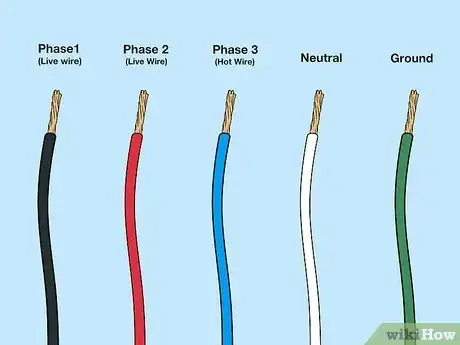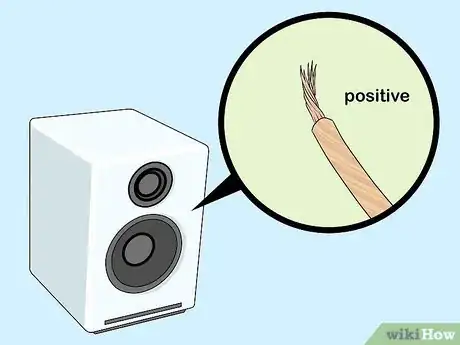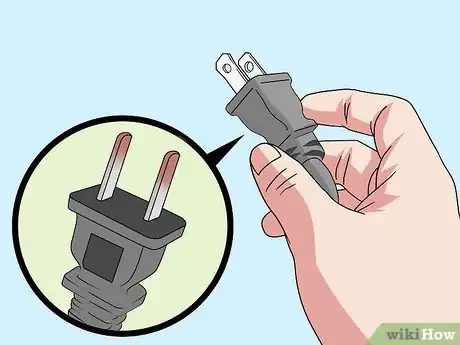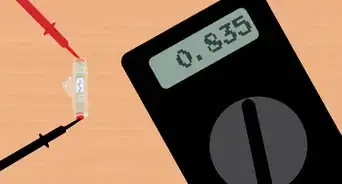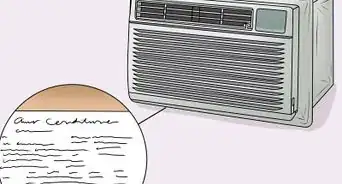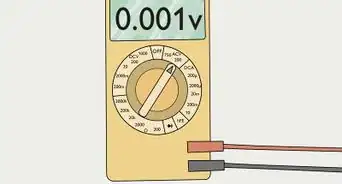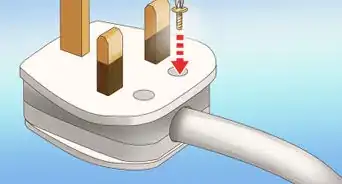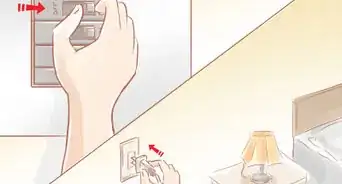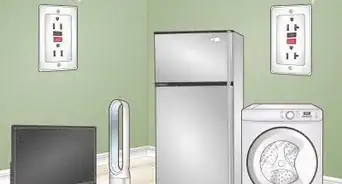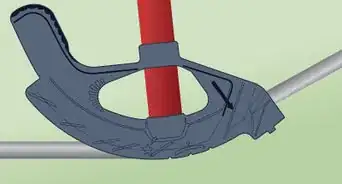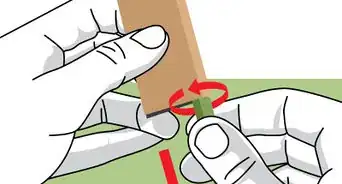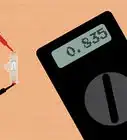This article was co-authored by Ricardo Mitchell and by wikiHow staff writer, Amber Crain. Ricardo Mitchell is the CEO of CN Coterie, a fully licensed and insured Lead EPA (Environmental Protection Agency) Certified construction company located in Manhattan, New York. CN Coterie specializes in full home renovation, electrical, plumbing, carpentry, cabinetry, furniture restoration, OATH/ECB (Office of Administrative Trials and Hearings/Environmental Control Board) violations removal, and DOB (Department of Buildings) violations removal. Ricardo has over 10 years of electrical and construction experience and his partners have over 30 years of relevant experience.
There are 8 references cited in this article, which can be found at the bottom of the page.
This article has been viewed 965,585 times.
When you're dealing with electrical wiring, it's important to know which is positive and which is negative—but how are you supposed to tell them apart? The easiest way to tell is by looking at the color, but the colors mean different things depending on what kind of power is being used. Don't worry, it's not as confusing as it sounds! We're going to explain everything you need to know so you can correctly identify positive and negative electrical wires no matter what you're working on.
Things You Should Know
- For DC power, the red wire is positive and the black wire is negative.
- For AC power, the black wire is the phase 1 hot wire, which means it's positive. The red wire is a phase 2 hot wire, and the white wire is neutral.
- For exposed wire, the copper strands are positive and the silver are neutral.
Steps
Expert Q&A
-
QuestionIf two wires are black, how can I tell which is negative and which is positive?
 Ricardo MitchellRicardo Mitchell is the CEO of CN Coterie, a fully licensed and insured Lead EPA (Environmental Protection Agency) Certified construction company located in Manhattan, New York. CN Coterie specializes in full home renovation, electrical, plumbing, carpentry, cabinetry, furniture restoration, OATH/ECB (Office of Administrative Trials and Hearings/Environmental Control Board) violations removal, and DOB (Department of Buildings) violations removal. Ricardo has over 10 years of electrical and construction experience and his partners have over 30 years of relevant experience.
Ricardo MitchellRicardo Mitchell is the CEO of CN Coterie, a fully licensed and insured Lead EPA (Environmental Protection Agency) Certified construction company located in Manhattan, New York. CN Coterie specializes in full home renovation, electrical, plumbing, carpentry, cabinetry, furniture restoration, OATH/ECB (Office of Administrative Trials and Hearings/Environmental Control Board) violations removal, and DOB (Department of Buildings) violations removal. Ricardo has over 10 years of electrical and construction experience and his partners have over 30 years of relevant experience.
Electrician & Construction Professional, CN Coterie Use a multimeter to test each one. Put the red side on the terminal to one black wire and the black side of the terminal to the other wire. If the tester shows voltage, the wire touching the red terminal is the one that has power.
Use a multimeter to test each one. Put the red side on the terminal to one black wire and the black side of the terminal to the other wire. If the tester shows voltage, the wire touching the red terminal is the one that has power.
Warnings
- The electrical wiring colors and standards in this article are for the United States. Colors and standards vary in other countries.⧼thumbs_response⧽
- Live wires are dangerous. It's best to shut down the circuit breaker or power down/unplug devices before touching the wiring to prevent electrical shock.[9]⧼thumbs_response⧽
References
- ↑ https://www.creativesafetysupply.com/articles/wire-color-codes/
- ↑ https://www.power-and-beyond.com/whats-the-difference-between-ac-and-dc-power-a-915187/
- ↑ https://www.creativesafetysupply.com/articles/wire-color-codes/
- ↑ https://www.creativesafetysupply.com/articles/neutral-wire-color/
- ↑ https://www.allaboutcircuits.com/textbook/reference/chpt-2/wiring-color-codes-infographic/
- ↑ https://sciencing.com/pin-plug-work-4571446.html
- ↑ https://inspectapedia.com/electric/Electrical-Wall-Plug-Wire-ID-Connections.php
- ↑ https://www.youtube.com/watch?v=xoUHbf_bRxw&t=58s
- ↑ https://www.cpsc.gov/s3fs-public/518.pdf
About This Article
If you want to identify positive and negative wires, keep in mind that appliance plugs have hot wires and neutral sites, rather than positive and negative sides. However, if you're using an extension cord, the positive wire will be the smooth one, while the negative wire will have a ribbed or grooved texture. To find the right wires on a speaker, check to see which colors you have. For example, negative silver wires are paired with positive gold wires. Alternatively, if you have a black wire, it'll be negative if the other wire is red, or positive if the other wire is striped. For more tips, like how to use a digital multimeter to identify positive and negative wires, scroll down!

